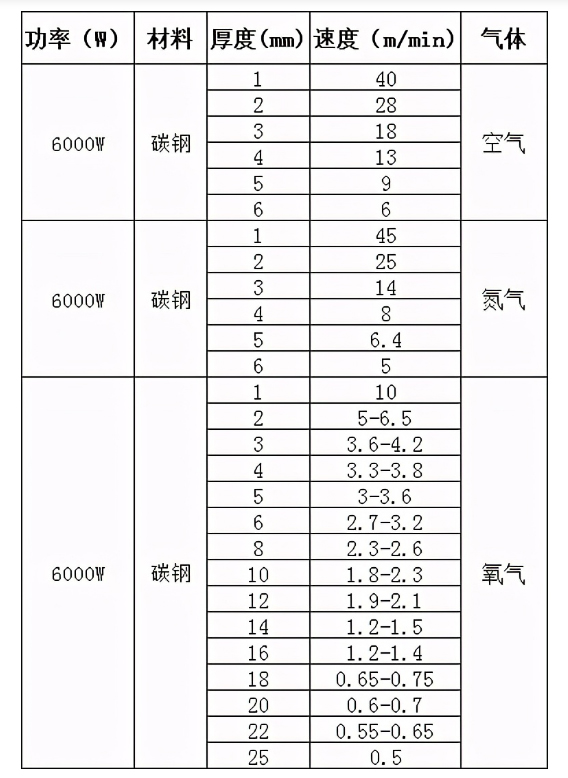When cutting carbon steel, laser cutting machines usually use auxiliary gases to assist in the operation. The common auxiliary gases are oxygen, nitrogen and air. What is the difference between these three gases when cutting carbon steel?
To understand the impact of each auxiliary gas on the cutting process, it is necessary to clarify the principle of the role of auxiliary gases. First of all the advantages of using air for cutting are clear enough, no costs are required. When using air, only the electricity costs of the air compressor and the machine itself have to be taken into account, eliminating the high cost of auxiliary gases. The cutting efficiency on thin sheets is comparable to that of nitrogen cutting, making it an economical and efficient cutting method. However, air cutting also has obvious disadvantages in terms of cross-section. Firstly, the cut surface can produce burrs, which require secondary processing to clean up, to the detriment of the overall product production cycle. Secondly, the cut surface can become blackened, which affects the quality of the product. Laser processing itself takes advantage of efficiency and quality accuracy, and the drawbacks of air cutting have led many customers to abandon this type of cutting.
Secondly, the use of oxygen cutting, oxygen cutting is the most common and traditional cutting method. The use of oxygen fiber laser cutting machine its advantages are mainly reflected in the cost of gas, in the processing of carbon steel-based sheet metal, without frequent replacement of auxiliary gases, increase cutting efficiency, convenient management. However, the disadvantage is that after oxygen cutting, there will be a layer of oxide film on the surface of the cutting surface, if this product with oxide film directly for welding, time will be long, the oxide film will naturally flake off, the product will form a false welding, affecting the quality of welding.
When oxygen is used as an auxiliary gas, an oxide film is formed on the cutting surface. The surface of oxide-free cuts is generally white and can be directly welded, painted, etc. The strong corrosion resistance also makes its application very wide.

The above cutting data is for reference only, the actual cutting effect shall prevail.
In summary, when cutting thick carbon steel plates above 6mm, only oxygen cutting is supported. When cutting below 6mm, if there are clear requirements for cutting quality and accuracy, it is recommended to use nitrogen cutting, which is highly efficient and can be directly processed in the next step, while oxygen cutting is slower and not recommended. When cutting below 6mm, if only cutting is considered or there are no clear process requirements, air cutting is recommended, with zero cost of gas.
Post time: Nov-23-2022
